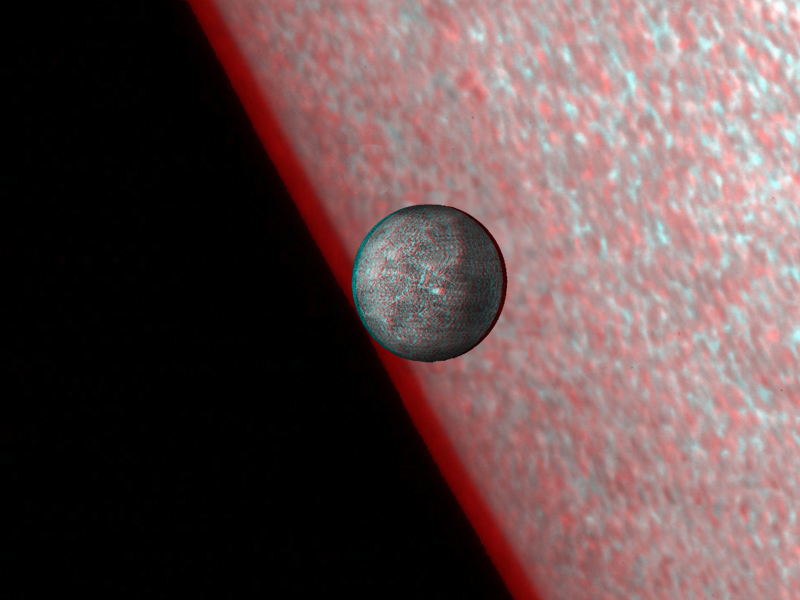I honestly pay little attention to Astronomy Picture of the Day (APOD), but it drew my attention to the image above (describing it as “a just-for-fun 3D presentation of the Mercury transit”). Hmmm.
If you take a look at the original source of the image, you can also find a Flash animation of the image and a “3D orbit” of the same. My issues? Fake stars for a start (in the animated versions of the above image, and admittedly, you want something in the deep background to optimize the dimensionality), although that’s just a pet peeve. Also, creating artificial stereo and labeling it as the ”transit” seems very deceptive to me (why not take two successive images of the transit from the same location on Earth, then create a stereo pair from them, which would reveal more about the underlying phenomena). And the “3D orbit” is utterly bogus and reinforces confusions that many people have about the scale of planets and their orbits.
At least the APOD description made it clear that it’s“just for fun.” Some explanatory text (aside from the sources of the imagery) would be helpful on the source page, too. For example… “Since the 17th Century, observations of planetary transits have allowed astronomers to determine the three-dimensional scale of the solar system—the actual distances between the Sun and planets. This 3D view of Mercury and the Sun pays homage to that achievement, using spacecraft data in lieu of actual terrestrial observations.“ Or something similar.
Honestly, I feel bad about being such a critic, especially since the Sungazer website, which offers scads of gorgeous images of the Sun in various wavelengths. It represents the work of one guy working on his own, and obviously, Greg Piepol is providing a great service to the web community. My kvetching should not be interpreted as any kind of indictment.

